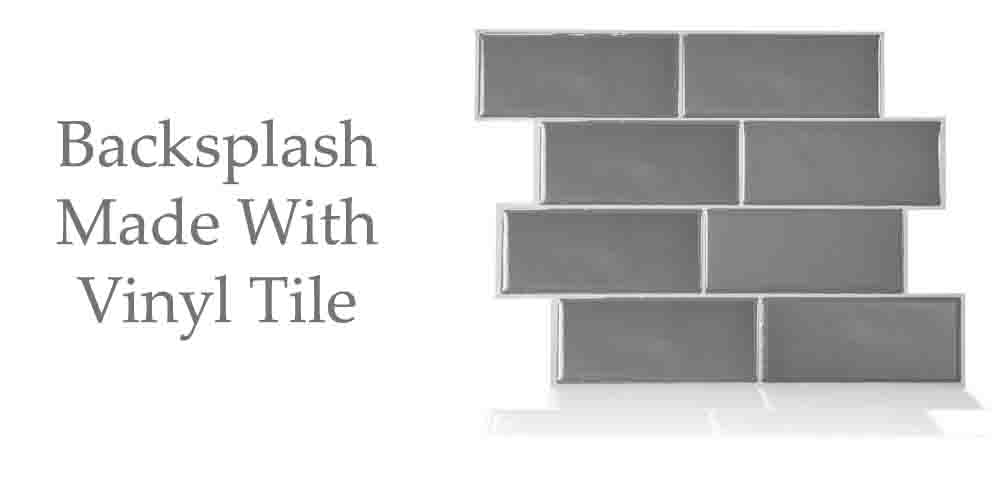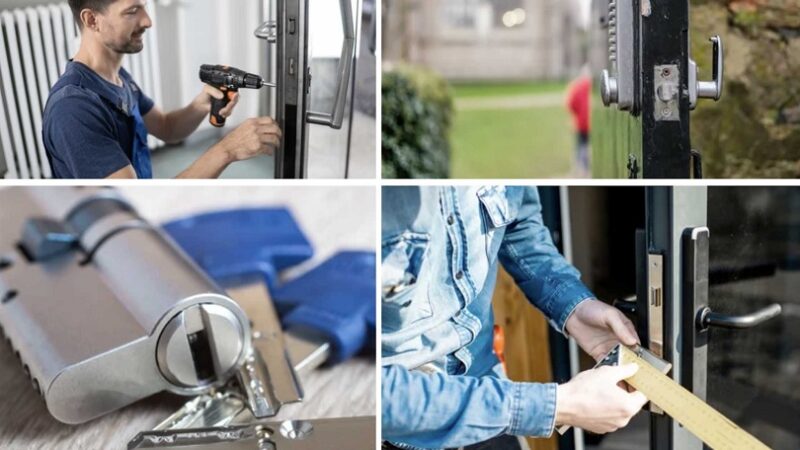An Easy Backsplash Made With Vinyl Tile

Consider clever mosaics vinyl tile backsplash option that is both stylish and affordable. This tutorial demonstrates how to make a backsplash using vinyl tiles.
Materials and Tools:
- vinyl tile
- decorative outlet covers
- measuring tape
- craft paper/newspaper
- masking tape
- marker
- tile cutter or utility knife
- straight edge or ruler
- safe cutting surface
- level
- rolling pin
- screwdriver
- extra outlet cover screws
Steps:
- Take a look at the vinyl tile options at your local home improvement or hardware shop. The range of appearances is incredible. Keep your attention on the peel-and-stick tile. This is the most straightforward tile you work with. Some tile alternatives may require pre-ordering.
- Bring samples home with you. Individual tile pieces are usually less than $2 each. Examining things in your area makes the decision-making process a lot simpler. Tip: The backsplash is a great place to use an accent color or tie your kitchen’s design aspects together. Pre-existing design components such as wood tones, metal tones, and wall colors should all be considered.
- Replace the outlet covers with new ones. Decorative outlet covers are a terrific way to add aesthetic flair to your kitchen while also maximizing the project’s impact. Make a list of the number of switch plates you’ll require. Tip: Switchplates with several switches or big outlet covers should be included. You can shop with confidence if you have this knowledge before your go to the store.
- One or two boxes, depending on the quantity of backsplash space you want to cover, will suffice for the endeavor. It’s usually a good idea to have additional supplies on hand.
- Get yourself some new outlet covers. Extra screws that fit all outlet covers but are longer than the ones given should be purchased. Because the vinyl tile adds thickness, having longer screws on hand makes life simpler.
- Thoroughly clean the backsplash area. The glue will cling better if the surface is clean.
- Make a template for yourself. Form a full template of the backsplash area by taping craft paper and newspaper together. Place the finished template on the floor. Make a note of all switch plates & electrical outlet positions on the template.
- Begin arranging tile pieces on top of a template, using your template as a guide. You’re not sticking the tile to a template, but you are producing a clear picture of how the tile pieces will be arranged on the wall. This straightforward step will help you enhance the aesthetic impact of your tile and determine where cuts are required. As much of the backsplash as feasible should be covered with complete tiles.
- Before installing, remove any outlet covers and switch plates.
- Cut your pieces if needed to fit inside the backsplash area using a tile cutter or horizontal line and a utility knife. Because underlayment is easy to cut, this technique is relatively straightforward. Tip: Having additional tile on hand makes these cuts less stressful. Install your new station covers once all of the tilings are in place.
- Begin gluing the tile to the wall. Begin this procedure when the widest tile expanse is visible. This is usually seen over the sink. Step one is crucial: Use a level to check that the tile correctly adheres to the wall.
- Press the tiles against the wall using a rolling pin. The extra pressure improves the adhesive’s adhesion.
Alternatives: Other materials that are simple to install as just a new backsplash are available. Cork tiles are available in a wide range of colors and are simple to cut. Another option to consider is pressed tin tiles. Always read the installation instructions and materials list provided by the manufacturer. Visit 8 Fresh Ideas of Kitchen Backsplashes for more amazing backsplash ideas.






